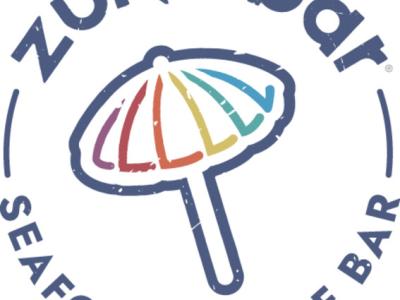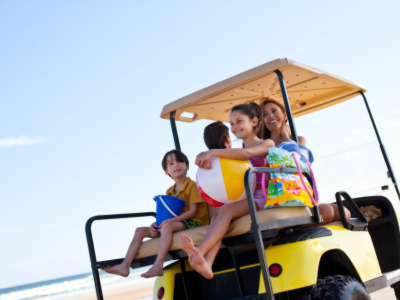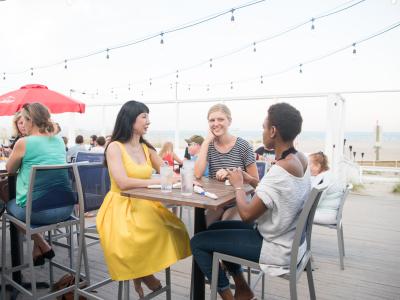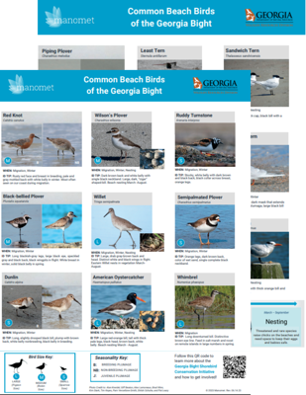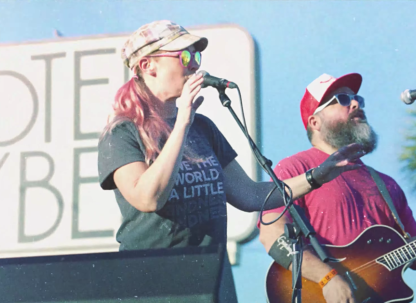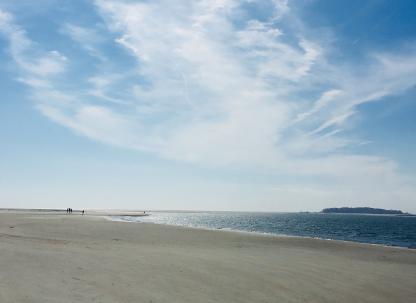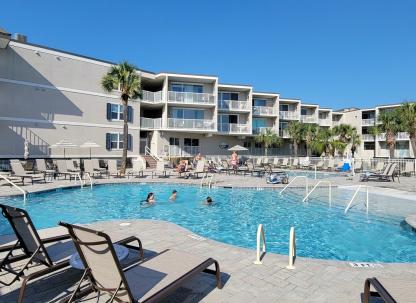Tybee Island: Home to Wildlife, Locals and Visitors
The Georgia coastline spans 100 miles, filled with marshes, barrier islands, mudflats, sandbars, hammocks, maritime forests and our local public beaches. Tybee Island sits at the northernmost edge of the Georgia coast, with the Savannah River to the north and a huge, protected complex of rivers, marshes, and islands, known as Little Tybee, to the south. We are one of only a few islands on the Georgia coast that you can visit by car. It's a fantastic place to access wildlife for viewing and sharing with your family.

If you are interested in birding on the beaches, you're in luck. We have shorebirds and seabirds on our beaches throughout the whole year!

Seabirds are gulls, terns, pelicans, and skimmers. Just like their name implies, sea birds feed in the sea. They have beaks made for fishing, diving into waves, plunging and gulping water, or skimming the top of the water's surface to catch fish. Their feet are webbed, allowing these seabirds to swim, and their feathers are waterproofed, allowing birds to take flight immediately after being in the water. Some of the most common seabirds you’ll see at Tybee Island are Laughing Gulls, Ring-billed Gulls, Royal Terns, Brown Pelicans, and Black Skimmers.
Shorebirds include species like sandpipers and plovers. Shorebirds feed on the shore with beaks that are made for probing, digging, and prying open shells. They are usually feeding in sand where the water meets the shoreline. Their prey mostly consists of coquina surf clams, marine invertebrates, and horseshoe crab eggs. The most common shorebirds you’ll see at Tybee Island are Sanderlings, Ruddy Turnstones, Willets and American Oystercatchers.
You can download the “Common Beach Birds of the Georgia Bight” quick guide here.

Beaches play a vital role for many types of shorebirds and seabirds, providing them with places to nest, feed, and rest. This includes both local and migratory species that travel incredible distances– some travel round trip from South America to the Arctic every year! The coastline of Georgia is particularly special for birds, hosting around 300,000 shorebirds each year and earning international recognition as an important bird habitat. In 2017, the Georgia Barrier Islands were officially recognized as a landscape of hemispheric importance for shorebirds by the Western Hemisphere Shorebird Reserve Network (WHSRN; pronounced wiz-ern).

Shorebirds and seabirds often gather in large flocks and return to the same beaches year after year. However, they face many challenges, especially the loss of the natural habitats they depend on. On Georgia’s coast, other threats include invasive animals, like hogs and coyotes, predators, coastal flooding, vehicles driving on beaches; human activities causing disturbance and development. Tybee Island provides an opportunity to create connections between visitors and this important landscape while protecting habitat for shorebirds, seabirds, and other wildlife.
The City of Tybee Island has supported efforts to reduce disturbance to shorebirds and seabirds on our beaches. Manomet Conservation Sciences, with support from the Georgia Department of Natural Resources, has established a wildlife beach area on the northern end of Tybee, where large flocks of birds gather throughout the year. These wildlife beach areas are helping visitors and locals recognize the incredible value of these habitats for birds while building local pride in our landscapes.
Manomet Conservation Sciences has ongoing projects that range from monitoring beach-nesting birds, collecting data for shorebird projects in remote places (habitat use, tracking, and behavior data), International Shorebird Surveys, planning local events, teaching kids' programs at schools, giving presentations and talks for the public, community engagement programming, creating outreach materials, signage and hosting a volunteer program, the Georgia Coastal Bird Ambassadors.

Red Knots. Photo: Allie Hayser
The Red Knot is a small, reddish shorebird about the size of a robin and is a migration superstar. Some of these birds travel an incredible 19,000 miles round-trip each year between where they spend their winters in Argentina and nest in the Arctic during the summer. Along the way, they make just a few stops, and the Georgia coast is one of their essential “rest stops.” Amazingly, Red Knots can fly nonstop for 5 to 6 days between these stops!
The Black Skimmer is a striking black-and-white seabird with a large orange-and-black beak, often spotted on the north end of Tybee Island. In spring and summer, flocks may nest in the dunes. During winter, skimmers from farther north along the East coast, gather in large groups at both ends of Tybee Island for shelter and rest away from the cold.

Photo: Tim Keyes

Shorebirds and seabirds. Photographer, Allie Hayser.
Inlets are known to be the most ideal spot for shorebirds and seabirds. Head out to Byers Street Crossover to see Piping Plovers in the winter at low tide. Check out Chatham Ave Crossover to catch large wintering flocks of mixed shorebirds and seabirds at high tides. Take a stroll along the North Beach Wildlife Area between the Jetty and Polk Street Entrance. This area is the BEST viewing area for birds. In the spring, there’s a chance that Black Skimmers will try to nest and Piping Plovers can be found there in the winter.

Manomet Conservation Sciences
- Walk Around Flocks: By giving birds space, they can feed and get the energy and rest they need to migrate or nest on our beaches.
- Leave Your Pup at Home: Tybee’s beaches are not open for dog walking. These birds interact with many predators along their migration and can not distinguish whether your dog is a “pet or a threat”.
- Give Birds Space: Birdwatching and photography are great things to do on Tybee Island, but it’s important to maintain a respectful distance from shorebirds and seabirds. Use binoculars or a zoom lens to avoid getting too close.
- Volunteer: Become a steward with the Georgia Coastal Bird Ambassador Program. Our stewards are provided with materials, resources, training, and support in our online community facebook group. To learn more about this, please email Allie Hayser at [email protected]
Further Resources:
- Watch this video about our work on the GA Coast! https://youtu.be/72OVexbGAlc?si=VjVJKi7I1B9F7XzL
- Check out this podcast from our partners at the Tybee Island Marine Science Center: https://tybeemarinesciencecenter.podbean.com/e/discovering-the-shorebirds-and-seabirds-of-coastal-georgia/
- Visit Manomet’s Georgia Bight Shorebird Conservation Initiative website to learn about their efforts on the Georgia coast: Georgia Bight Shorebird Conservation Initiative - Manomet Conservation Sciences
